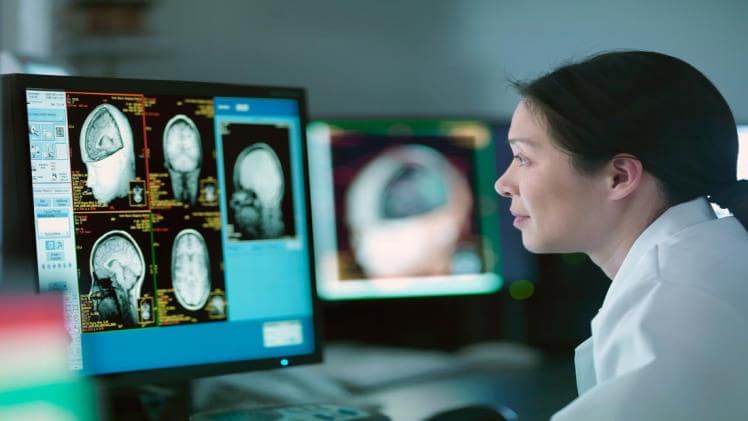Each year, millions of people are affected by neurological disorders, sometimes known as diseases of the brain, spine, and the nerves that connect them. A healthcare provider will first perform a complete medical history and physical examination before making a diagnosis of a nervous system issue.
Understanding the signs of neurological illnesses is critical because it can drive you to seek medical attention, resulting in correct diagnosis and effective treatment. Let’s talk about the most popular test for the nervous system so that healthcare experts can identify the cause of your illness and create successful treatment plans.
How to Diagnose Neurological Disorders?
A condition in the nervous system or brain is what causes a neurologic condition or neurological disease (i.e. spinal cord and nerves). There may be both physical and psychological manifestations of this disorder. A healthcare provider will first perform a complete medical history and physical examination before making a diagnosis of a nervous system issue. Depending on your condition and the neurologist you visit, you might undergo a number of tests. These tests include blood tests, electrodiagnostic tests, neurological evaluations, and diagnostic testing. To assist doctors to understand what is going on, these tests all differ from one another and focus on various areas of the nervous system and brain mytoptweets.
-
Neurological evaluation
Consists of a physical exam that evaluates your neurological function, muscle strength, autonomic nerve function, and touch sensors.
-
Diagnostic testing
Determine the condition based on the patient’s medical history, symptoms, and physical examination.
-
Electrodiagnostic test
The electrical activity of a patient’s nerves and muscles is measured by these tests. MRI, spine tap, or nerve biopsy are frequently used in this test.
-
Blood test
Blood test for nervous system is used to identify immune system abnormalities or vitamin deficiencies.
Can a Blood Test Detect Neurological Problems
Blood tests can be used to diagnose dementia, rule out certain medical illnesses that might have a negative impact on the nervous system, identify the medical causes of neuropathy, and monitor the levels of therapeutic medications used to treat neurological problems. The cause of nerve injury can be found using a range of blood tests. These tests might check for diabetes onset, vitamin deficiency, elevated blood sugar levels, etc.
Best medical laboratory tests for neurological disorders
To identify and treat neurological diseases, neurologists use a variety of different tests and procedures. Some of these Tests for Neurological Disorders consist of:
-
Cerebral Angiogram
The blood vessels in the brain are impacted by a number of illnesses, including aneurysms, arteriovenous malformations, and vasculitis. The gold standard for diagnosing these disorders is cerebral angiography. This test is injecting a dye into the brain’s blood vessels, followed by an X-ray of the vessels.
-
CT Myelogram
Some people who have metal implants cannot be scanned using an MRI machine. These individuals can undergo a particular kind of CT scan called a CT myelogram to evaluate their spinal cords.
-
CT Scans
Using CT images, surgeons can localize lesions in the brain or spinal cord. It is especially helpful in figuring out whether there is a brain hemorrhage or bone damage to the spinal column.
-
Nerve Conduction Studies
An electromyogram, also known as a nerve conduction study, can assist determine whether a person has issues with their muscles, the nerves that supply their muscles, or the spinal cord itself if they experience weakness or twitching in a muscle.
-
Nerve Conduction Velocity
Testing the conduction velocity of peripheral nerves evaluates them. The spinal cord and the muscles are connected by peripheral nerves. Over the nerve that will be evaluated and the muscles it activates, electrodes are positioned. One electrode receives brief electric shocks.
-
Lumbar Puncture
Our brain and spinal cord are lubricated and shielded by cerebrospinal fluid. Finding out if an infection or tumor has migrated to this area of the body may require examining this fluid. A spinal tap or lumbar puncture is used to obtain the fluid.
-
MRI Scans
The best imaging technique for soft tissues, such as the brain and spinal cord, is an MRI scan, which is superior to a CT scan for assessing bone architecture. The hydrogen atom nuclei’s alignment in a very strong magnetic field is measured by the MRI machine. Another benefit of MRI over CT is that it uses a magnet rather than ionizing radiation.
Conclusion
To assist in the diagnosis and treatment of neurological diseases, neurologists can carry out a variety of treatments. However, a person’s neurologist or physician will refer them to a neurosurgeon if they need surgery. If you have nerve pain, make sure to seek treatment from the best neurology hospital.

